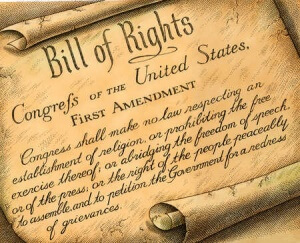Religious Freedom in the Constitution: Original vs. Amended
November 30th, 2018

To have a complete understanding of religious freedom in the U.S. Constitution, it is important to know how the framers viewed religion.
In modern day constitutional discussion, there is typically no argument about whether the Constitution protects individuals’ freedom to engage in the practice of religion regardless of which religion it is. However, the discussion typically focuses on the First Amendment to the Constitution and not the original Articles. Did the framers discuss religion, and if so, to what extent? In order to have a complete understanding of religious freedom in the United States, it is important to know as much as possible about how the framers viewed religion and how their understanding is reflected in the supreme law of the land.
The Original: Article VI
In the original text of the Constitution, religion is mentioned only once. It is referenced in the Constitution’s mandate that “no religious test shall ever be required as a qualification to any office or public trust under the United States.” What this clause is essentially saying is that the Constitution prohibits any public official from having to meet a certain religious requirement in order to hold office. Unlike the original English succession laws that governed that monarchy and mandated that the regent not be Roman Catholic, those selected to serve the public in the United States would not be subject to such a restriction. Comments from contemporaries from the time period suggest that the reasoning behind this provision is so that the people of the United States may elect whomever they believe to be most competent, regardless of that person’s religious persuasion.
The New and Improved Constitution: Amendments
As the Constitution is and was always intended to be a living document, it is subject to change whenever changes to American society necessitate clarification or modification to the document. The mechanism by which this occurs is the amendment process. Congress may propose amendments to the Constitution, which then require ratification by three-fourths of the states before becoming law. In 1789, Congress used this process for the first time in order to create what we now know as the Bill of Rights, or first ten Constitutional amendments. The very first amendment holds what we now use to defend the ideals of religious freedom. The framers’ ban on religious tests for public office has since been incorporated into the protections of the First Amendment by the case law interpreting religious freedom in the United States.
Naysayers from the framers’ time put forward some of the same arguments that are sometimes heard today; specifically, that individuals who do not share the same religious beliefs are somehow less competent and deserving of lesser protection. Luckily for all Americans, these beliefs can hold no weight pursuant to both the original and amended versions of the United States Constitution. In order to continue to protect all Americans from those that would restrict their religious freedoms, the Universal Life Church Case Law will continue to monitor legislative developments and fight to protect the freedoms guaranteed by the Constitution.


